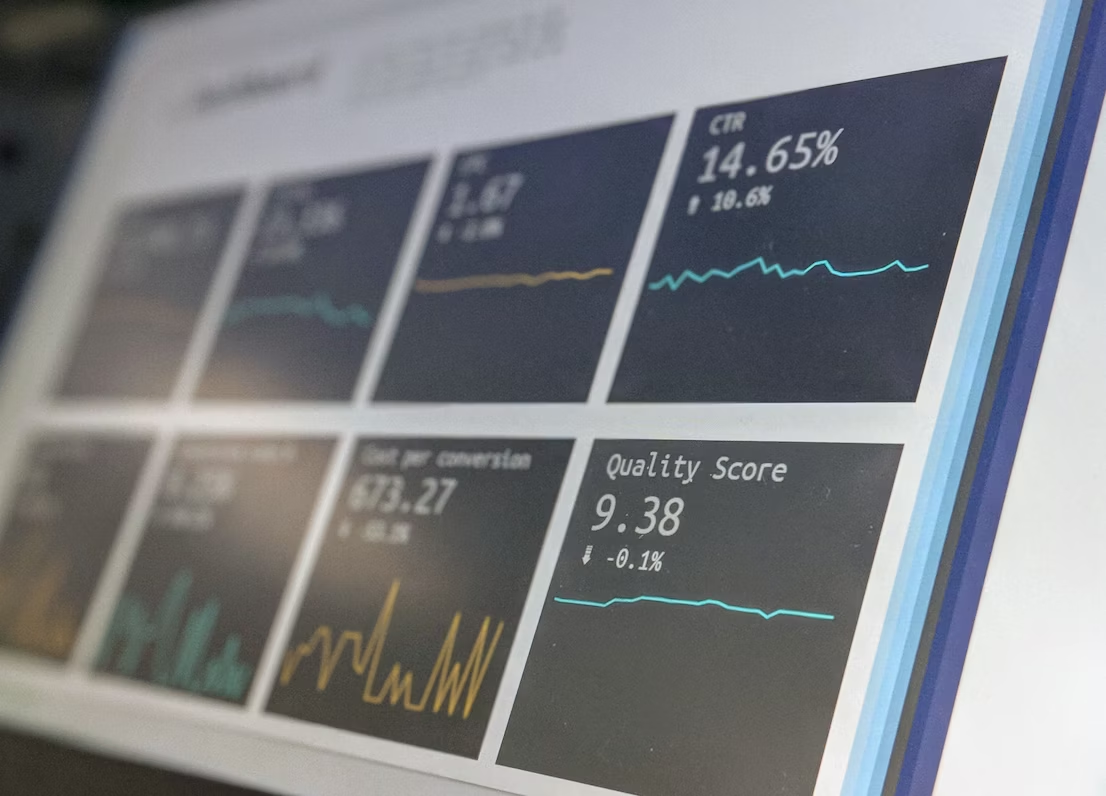Introduction
Theatre directors and dramaturgs have crucial roles in bringing a theatrical production to life. Effective planning and organization are key to their success.
The theatre director oversees the entire creative process, from casting to rehearsals and final performances. They are responsible for unifying the vision of the production and guiding the actors and creative team. Dramaturgs are literary managers who provide contextual research and support to help guide the director's interpretation of the script.
To handle these complex creative jobs effectively, directors and dramaturgs rely on robust systems for planning and tracking details. Rehearsal schedules, casting tools, scene breakdowns, and other organizational documents keep productions on track during the hectic rehearsal period. Comprehensive director's binders and dramaturgical guides collate all the essential information needed.
Thoughtfully designed tools, templates and files are invaluable resources for theatre-makers undertaking the challenge of mounting a successful show. This guide will explore a variety of useful schemas, forms and documents to support directors and dramaturgs in bringing their theatrical visions to life. With the right organizational foundation, directors and dramaturgs can focus on their creative work and artistry.
Rehearsal Schedules
Creating a clear and effective rehearsal schedule is an essential part of any theater production. Schedules keep everyone organized and ensure scenes and the play as a whole progress efficiently. There are many templates and tools available online to assist directors with crafting detailed rehearsal schedules.
Rehearsal Schedule Templates
- Rehearsal Schedule Template (Word) - This simple, downloadable template allows you to breakdown scenes and characters, and schedule dates/times for each rehearsal.
- Rehearsal Scheduler - An online tool that automatically generates a calendar-style rehearsal schedule based on your show specifics and availability.
- Google Calendar Rehearsal Template - Use Google Calendar to create a shareable rehearsal schedule online that the full cast and crew can access.
Tips for Organizing Efficient Schedules
- Identify total availability - Poll cast and crew for availability and blackout dates before creating schedule.
- Start and end on time - Respect people's time by not overscheduling rehearsals or letting them run over.
- Leave wiggle room - Build in some unscheduled time in case scenes take longer than expected.
- Schedule by scene/character - Cluster rehearsals by scenes and characters to maximize efficiency.
- Space out intensive scenes - Schedule demanding scenes with breaks before and after. Don't overload actors.
- Prioritize problem areas - Devote extra time to rehearsing tricky scenes, choreography sections, etc.
- Coordinate with designers - Ensure designers can attend key rehearsals for their contributions.
- Distribute evenly - Try to schedule similar amounts of time for each character/actor.
- Share schedule readily - Email the schedule and post physical copies where the cast and crew can easily access.
Casting Tools
Casting the right actors for each role is one of the most important parts of putting together a successful production. Having the proper tools to organize and track auditions can make the casting process run much more smoothly.
Audition Spreadsheets
- Create a spreadsheet with columns for actor name, headshot, resume, role(s) auditioned for, audition date, and notes. This allows you to neatly track all of your auditionees in one place.
- Use separate tabs in the spreadsheet for different roles or categories of roles. This makes it easy to filter and view candidates for each part.
- Add columns for dance, singing, or other skills depending on the requirements of the production. This ensures you capture all the necessary information about each actor's abilities.
- Color code or highlight standout candidates to quickly identify leading possibilities as callbacks approach.
- Share the spreadsheet with your creative team to collectively track notes and facilitate the casting decision process.
Audition Sign-In Forms
- Create a simple sign-in sheet that collects key details: name, phone/email, union status, height, roles interested in, and special skills. Have each actor sign in when they arrive.
- This provides you with contact information and important criteria that will inform casting all in one place.
- Use the height information to rule out any roles with strict height requirements.
- The special skills and role interests help quickly identify candidates for ensemble or specialty roles.
- Retain the sign-in forms as back-up contact references in case you need to reach out to actors again during casting.
Well-organized spreadsheets and sign-in forms make sorting through dozens or even hundreds of auditionees much more manageable. They enable you to quickly access key information about each actor as you deliberate final casting decisions.
Scene Breakdowns
Scene breakdowns are critical documents for analyzing the key dramatic elements of each scene. They help the director and dramaturg identify the main actions, objectives, obstacles, conflicts, discoveries, and more within every scene.
Some key scene breakdown templates and documents include:
- Character breakdowns - Documents listing each character's key traits, objectives, obstacles, relationships, and arc through the play. This helps analyze each role in-depth.
- Beat breakdowns - Documents dividing each scene into beats based on shifts in action, intent, tone, or discoveries. Includes the key action, objectives, and summary of each beat.
- Scene objectives - Documents outlining the main dramatic objective or purpose of each scene. What is accomplished? How does it advance the plot and character arcs?
- Conflict analysis - Documents noting the key conflicts, oppositions, and tensions between characters or forces within each scene.
- Mood analysis - Charts tracking emotional shifts and tones throughout each scene.
- Dramatic action analysis - Documents labeling the specific dramatic verbs and actions within each beat/section of a scene.
- Scene unit breakdowns - Detailed documents dividing scenes into units based on entrances/exits of characters, topic shifts, and action changes. Includes objectives, summary, and analysis of each unit.
Having comprehensive scene breakdown documents like these provides critical insight into the structure, objectives, and dramatic action of each scene. They become invaluable resources for rehearsals and staging. Blank templates help directors and dramaturgs efficiently create these analyses for any production.
Prop Lists
A good prop list is essential for keeping track of all the objects and items needed for a production. Spreadsheets are an excellent tool to create detailed prop lists. Here are some tips:
- Create separate columns for prop name, description, scene used, character using it, number needed, who is acquiring it, due date, and any other important notes. This keeps all the key details in one place.
- Make a row for each individual prop. Even if you need multiples of one item, list each one separately. This prevents anything from getting overlooked.
- Sort the list by scene order. This makes it easy to double check that all props for each scene are accounted for.
- Use color coding or highlighting to indicate the status of each prop (needs acquiring, acquired, needs work, ready, etc.)
- Leave plenty of room for notes and updates. Tracking changes is vital.
- Share the list with designers and stage managers regularly. Allow them to provide updates.
- Create a separate checkout sheet for actors to sign out hand props from storage. This keeps things from going missing.
- Organize physical props backstage by scene for easy access. Use labels and containers to keep everything tidy.
- Maintain the prop list throughout rehearsals and the run. Continuously confirm all items are accounted for.
Keeping an organized, detailed prop list will help ensure no critical object falls through the cracks. Props are integral to performances, so this planning tool is invaluable for directors and stage managers. A spreadsheet checklist allows the entire team to stay on top of this important production element.
Costume Plots
Costume plots are visual representations that map out all the costumes each character will wear in a production. They are essential tools for costume designers and wardrobe crews to plan and organize all costume changes.
There are a few key elements to include in costume plots:
- Character names listed on the left side vertically
- Scenes or acts across the top horizontally
- Symbols or drawings representing each costume worn in the corresponding scenes
- Quick change notations marked where necessary
- Notes section for additional details
To create a costume plot:
- List all characters down the left side vertically. You may group characters like ensemble members.
- Add all acts and scenes horizontally across the top. You may just list Songs or Numbers for musicals.
- Fill in the grid with costume change details. Simple drawings or shapes work well to represent each look.
- Mark quick changes with highlighting or symbols like QC. These are changes that happen very quickly backstage.
- Include a notes section for specifics like costume pieces, accessories, etc.
Costume designers will collaborate with the director early on to map out all required costume changes. The final plot is shared with stage management and wardrobe team well in advance to prep all the costumes and coordinate the fast changes.
Costume plots keep everyone organized on all the details regarding costumes, so nothing is forgotten or overlooked. They are living documents updated throughout the production process. Accurate plots make for smooth costume transitions in the show.
Rehearsal Reports
One of the most essential documents for directors and dramaturgs during the rehearsal process is the rehearsal report. This is a record of what happened during each rehearsal session that documents the progress of the production and any notes or changes to be addressed going forward.
Rehearsal reports typically cover the following areas:
- Date, time, and location of the rehearsal
- Scenes, acts, or sections rehearsed
- Cast members present or absent
- Summary of what was accomplished
- Notes from the director on acting, blocking, pacing, interpretation, etc.
- Design or technical notes on lighting, sound, set changes, props, costumes, etc.
- Adjustments to the schedule or agenda for upcoming rehearsals
Keeping detailed rehearsal reports helps directors stay organized, track the evolution of the production, and maintain a consistent vision. For dramaturgs, these reports provide insight into the directorial process and interpretation to inform their support of the show.
There are many rehearsal report templates available online that directors and dramaturgs can customize to their needs. Some key elements to include are:
- A header with the production title, date, location, start/end times
- A section to log attendance and absences
- Tables to list scenes covered and notes by character or technical element
- Space for a general summary and additional observations
- Action items or reminders for next rehearsal
Thorough rehearsal reports become a logbook of the organic, creative process of bringing the production to life. They provide an invaluable reference point for the entire team throughout the rehearsal period.
Director's Binders
A director's binder is an essential tool for keeping everything organized during the rehearsal process. Here are some tips for creating and using an effective director's binder:
Contents to Include
- A copy of the script - Include blocking notes, highlighted character entrances/exits, prop placeholders, etc.
- Rehearsal schedule
- Contact sheet - Phone numbers and emails for cast, crew, designers, theater staff
- Cast list with headshots
- Copies of audition forms and actor resumes
- Scene breakdown
- Prop list
- Costume plot
- Lighting plot
- Set design sketches
- Notes from design/production meetings
- Rehearsal reports
- Program drafts
- Budget information
- Research materials on the play, author, time period, etc.
Organizing the Binder
- Use tabbed dividers or folders to separate different sections
- Keep script notes and blocking separate from other materials
- Have a pocket folder for loose papers like contact sheets and schedules
- Organize chronologically when possible - audition forms, rehearsal reports, etc.
- Keep research materials separate if extensive
- Only include essential info - don't overload with unnecessary papers
- Create lists for props, costumes, sound cues within relevant sections
- Index pages so materials can be found easily
Having a well-organized director's binder makes the rehearsal process run more smoothly and helps keep everything in one place. Update and refer to the binder frequently throughout the production process.
Dramaturgical Tools
Theater dramaturgs do a lot of research, analysis, and organization to provide context and insight into the world of the play. Having frameworks and templates helps dramaturgs methodically compile key information that can inform the creative team's choices.
Some useful dramaturgical tools include:
Research Grids
Research grids allow dramaturgs to map connections between characters, themes, imagery, and other elements across the script. This helps uncover patterns and relationships that may not be immediately obvious from simply reading the text. Grids can track things like:
- Character interactions
- Repeated motifs, objects, colors, etc
- Timeline of events
- Evolution of themes
Keeping this visual information in one place allows the dramaturg to spot links and share revelations that can shape directorial choices.
Character Profiles
In-depth character profiles dive deep into each role's background, motivations, relationships, and arc within the story. Profiles typically include:
- Physical description
- Backstory
- Personality traits
- Objectives and motivations
- Key relationships
- Notable quotes
- Overall change/growth
With such intimate knowledge of each character, the dramaturg can offer guidance about building performances with authenticity and complexity.
Analysis Forms
Customizable analysis forms help dramaturgs methodically track different elements across the script. For example:
- Symbolism analysis to decode recurring symbols
- Thematic analysis to track development of key themes
- Language analysis to identify patterns in dialogue
- Tone/mood analysis to pinpoint emotional shifts
These forms provide scaffolds for close reading while allowing dramaturgs to capture insights in an organized way.
Worldboards & Inspiration Boards
Visual inspirations boards collect images, textures, colors, and other visuals that evoke the world of the play. These help set the mood and conceptualize design elements. Dramaturgs can create:
- Setting/location boards
- Time period boards
- Character collages
- Color palettes
Having these visual references helps creative teams unify their vision and makes discussions more concrete.
The right frameworks help dramaturgs shape a production through meticulous analysis and curated inspiration grounded in the text. Dramaturgical tools unlock insights that may otherwise go unnoticed.
Production Guides
Running a theater production involves coordinating many moving parts - from casting to rehearsals to technical elements. Production guides, handbooks and manuals provide valuable resources for keeping everything running smoothly.
Stage Management Handbooks
Stage managers are the unsung heroes of any production, responsible for scheduling, communication, and organization from first rehearsal through closing night. Stage management handbooks provide guidance on key responsibilities and procedures:
- Organizing rehearsal schedules, actor calls, tech rehearsals, dress rehearsals
- Maintaining props tables and tracking all props and set pieces
- Recording blocking and creating prompt scripts
- Running rehearsals and shows, including calling cues
- Communicating critical info between creative team, cast and crew
The Stage Manager's Toolkit and The Back Stage Guide to Stage Management are two popular handbooks for emerging stage managers.
Directing Manuals
Directing a theatrical production involves vision, collaboration and management. Directing manuals provide practical advice on bringing a show to life onstage:
- How to break down a script, plan rehearsals, and develop a directorial vision
- Working with designers to conceptualize sets, lighting, costumes and more
- Best practices for casting, running rehearsals, and collaborating with actors
- Troubleshooting challenges and common directing pitfalls to avoid
Respected directing handbooks like Directing: A Handbook for Emerging Theatre Directors and The Practical Handbook for the Actor provide useful guidance.
Technical Theater Guides
Behind every great show are the technical crews handling sets, lighting, sound, costumes, props and more. Technical theater handbooks reveal the secrets of smooth backstage operations:
- Detailed guidelines for building and rigging various types of stage sets
- Instructions for lighting design, hanging and focusing lighting instruments
- How-to's for sound, video, makeup, costumes, and special effects
- Safety procedures, equipment maintenance, and stagecraft techniques
The Backstage Handbook, Stage Rigging Handbook, and Technical Theater for Nontechnical People offer invaluable tech theater knowledge.
Handbooks, manuals, and guides provide roadmaps for every aspect of running successful productions. From the stage manager calling cues to the dresser quick-changing actors, these resources help theater teams work together seamlessly.









